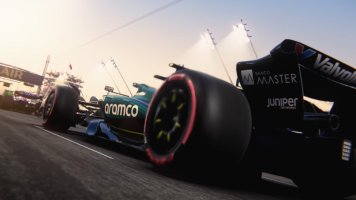Surprised by your answer. In that case you run the Aero even below G2 nits! I thought that most people bought the Aero over the G2 for its clarity which is for a huge part caused by the higher amount of nits that the aspheric lenses let through. I don't see any reason to run it below 100 percent, it really ruins the immersion for me. Meta is working on hmd's with 20.000 nits.. that's the closest to reality according to meta. I guess that it's super subjective then.
"Human eye is capable of responding to an enormous range of light intensity,
exceeding 10 units on logarithmic scale (i.e. minimum-to-maximum intensity variation of over 10-billion-fold)."
The nits have nothing to do with clarity if your headset has a good focal range. By that I mean that if you can focus your eye naturally at an object in VR at a distance that you expect it to be than it should look sharp and clear.
If you need higher nits for sharpness in VR either you need your vision corrected or the lens you are looking through doesn't have the range you need.
The higher the illumination the the more your iris constricts. In camera terms that makes the aperture small which increases your in focus area or depth of field. It does not make the image sharper but it will give you a larger range of distance that appears sharp and in focus. (Beyond a certain threshold)
A great lens is tack sharp wide open, but has a wafer thin distance that is in focus. It is true that most lenses need to be stopped down to get the maximum sharpness and the human eye does need a certain amount of light to achieve sharpness. That value is higher as you are resolving the detail approaching a retina display, but we are well above that value already.
So if your headset is by Meta or Valve, the focal range of the lens matches your normal human focal response nearly perfectly you don't need brightness as a crutch. The Aero is very close to the Meta and Valve focal range. Close enough not to matter. The G2 is off the mark a chunk and requires more brightness to increase the depth of field you perceive to keep what you see in focus throughout your focal range. Historically Pimax has been even further off the mark. This was an issue with the early Crystal lenses where people couldn't focus into the distance without the image becoming less sharp. Additional nits would help with that by increasing the range that you perceive as in focus and sharp.
Think of it this way. When you need reading glasses as you age, your lens is getting harder and won't flex as well to focus up close. Having trouble reading is much worse in the dark places because your irises open way up to let more light in, but that decreases your depth of field and your lenses are unable to focus that close anymore.
However in very bright light your iris closes down to a much smaller aperture giving you much more depth of field. So you can frequently read something up close without reading glasses in bright light that you have trouble reading at lower light levels. Your lens are still focusing as close as they are capable of, but because your eye is effectively stopped down your depth of field has increased enough for what you are reading to be in focus.
With the VR lenses we are looking at this in reverse. If a particular VR lens looks out of focus at certain focal ranges and we add enough light so that the human eye's depth of field is deep enough to include the focal range of that VR lens we can bring that image back into the sharp range.
Going back to the BigScreen Beyond. If the color and image sharpness is enough to impress these people at lower light levels, The lens likely has a focal range that encompasses the natural focusing tendencies of the human eye very well and better than other other headsets that need more light to look sharp.










